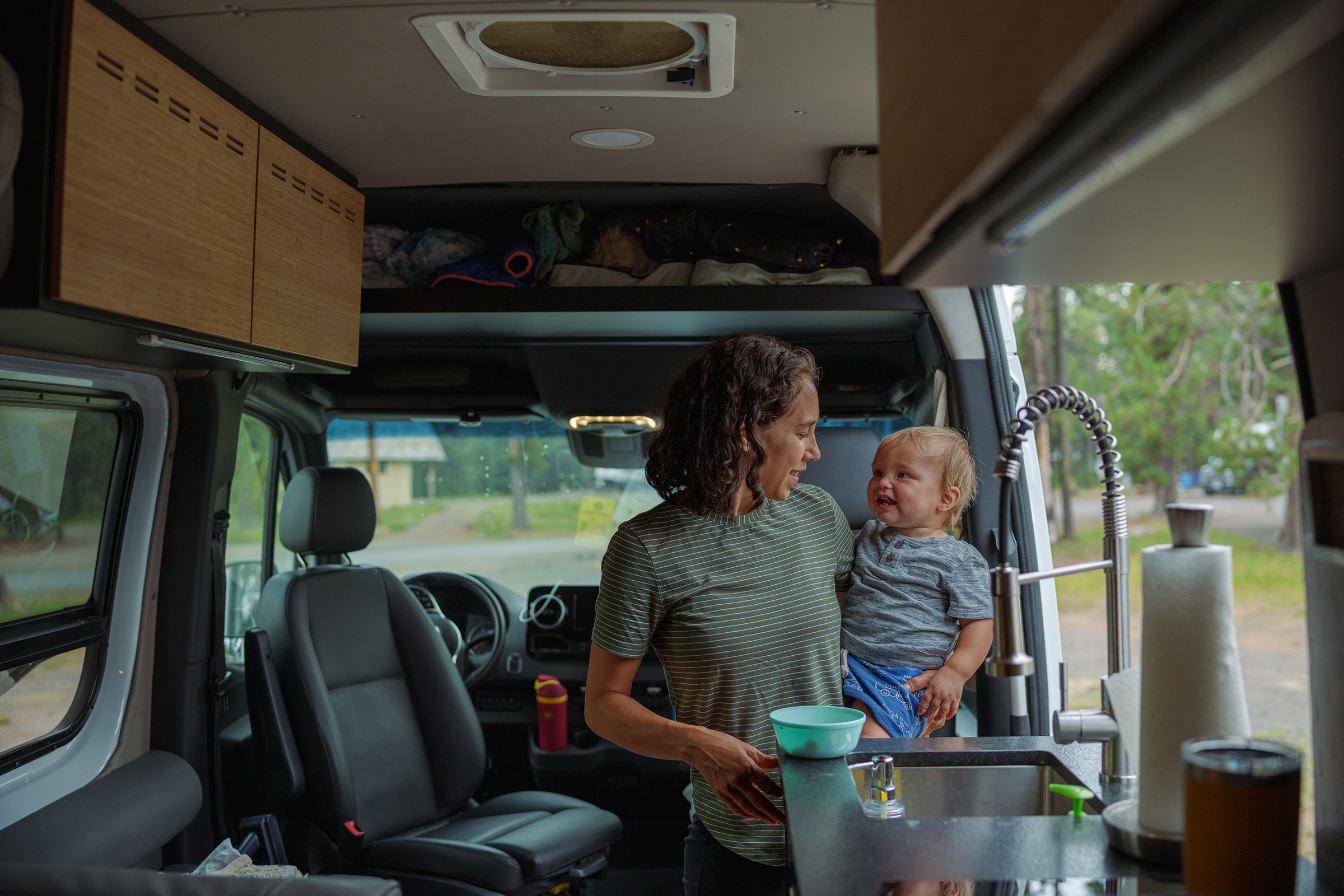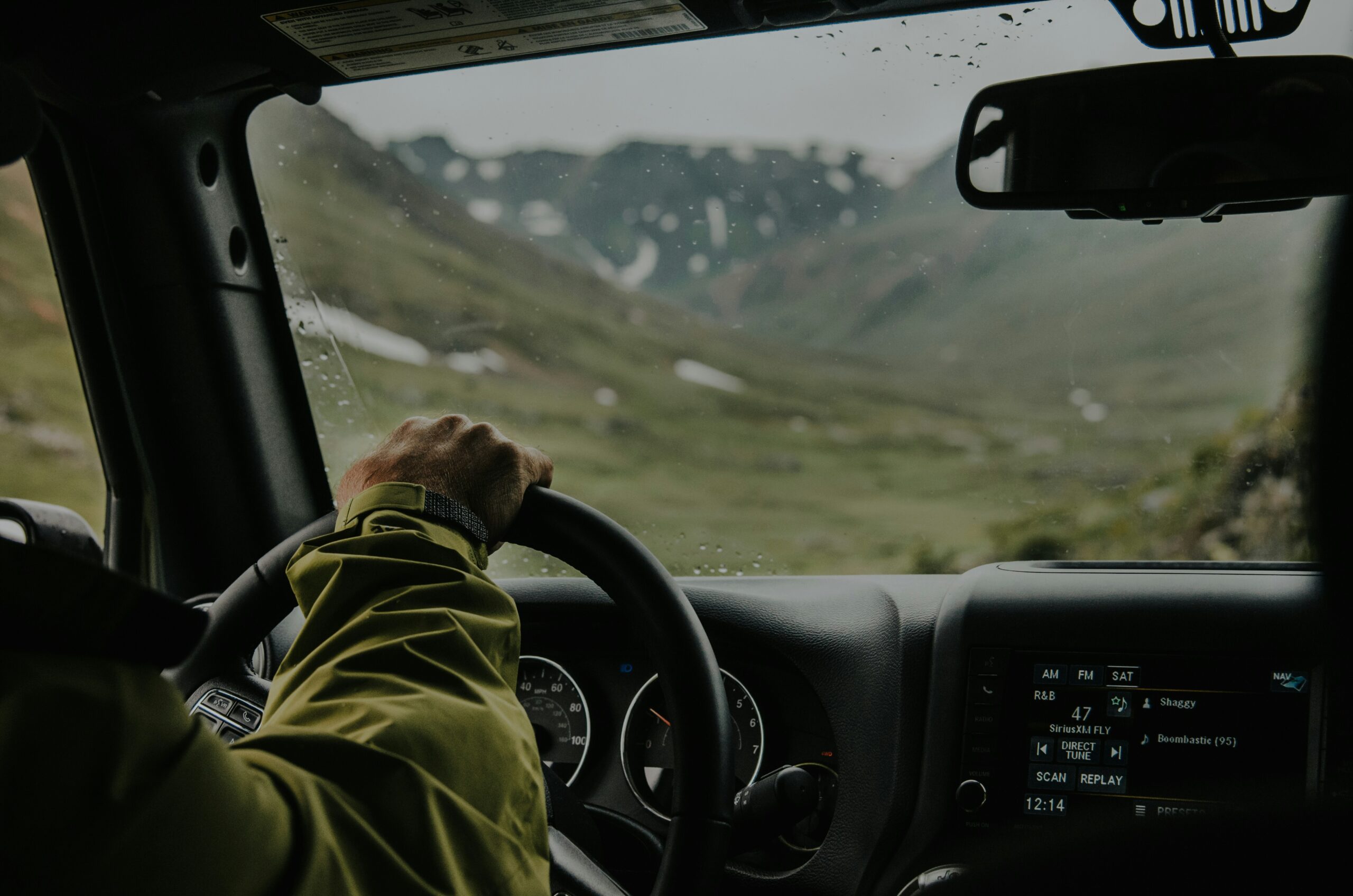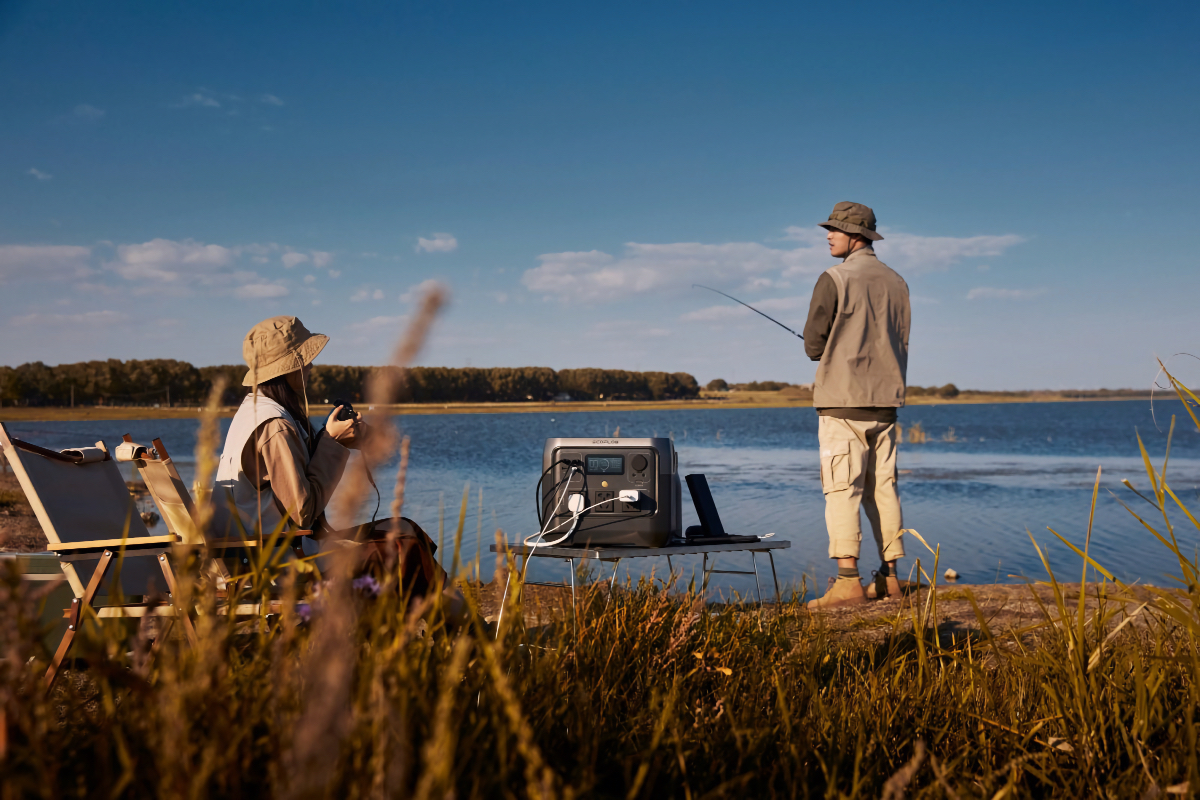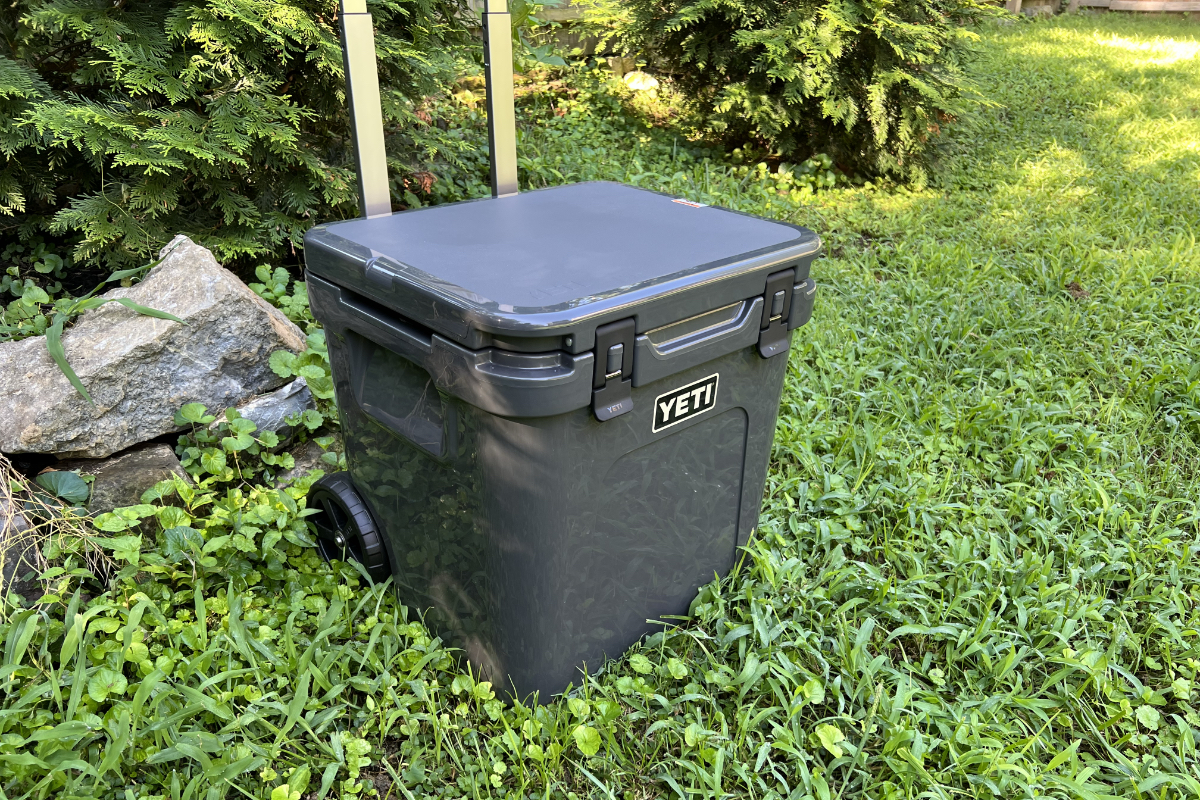14 Best RV Bug Remover Products
Image Caption:
Unless you travel with your own personal detailing crew, cleaning the bugs off the front of your coach is likely a task that falls on you. Different times of the year and different parts of the country produce different types of bugs, but cleaning them off is always a challenge. A modern motorhome is a big target and the bugs seem to always find a way to donate their organs to the science of bug removal. The longer they stay on the front of your motorhome, the harder they are to remove, so if you want to get a jump start on bugging out, it’s best to start as soon as possible.
There are many ways to remove bugs and many products that claim to be the best at this arduous task. Our goal in this article is to find some good cleaning products and, just as importantly, find some good tools and methods to help you restore your paint to its original condition.
The bug removers we tested fall into three basic categories. The first, and most common, type is the traditional thin liquid cleaner that is sprayed on the surface then rinsed off after washing. The second type is a thin liquid that is sprayed on then wiped clean and dry on the surface without the use of rinse water. Finally, there is a third type of cleaner that sprays on as a thick spray with the viscosity of a typical hand lotion. It is also wiped off the surface with a microfiber towel and polished dry with another clean cloth. Each of these methods have their strengths and weaknesses. Let’s take a look at each one.
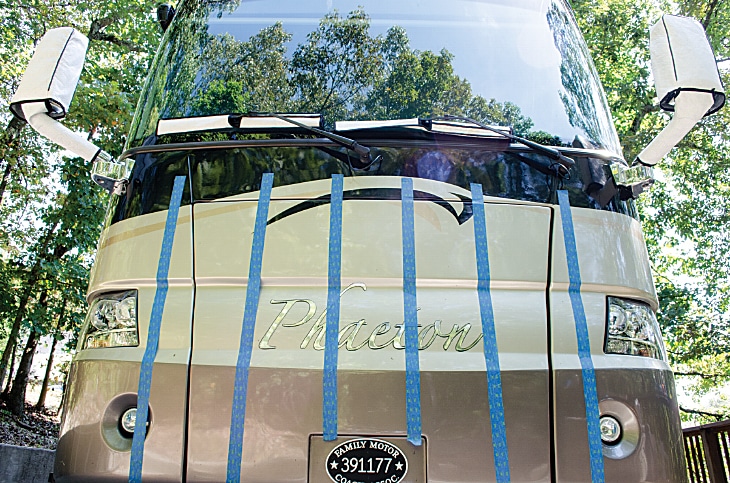
During our tests we divided up the front of the coach with painter’s tape and then used each product in a specific section so we could evaluate each one properly.
Spray On, Rinse Off
The first type of cleaner requires a water rinse after cleaning, which is the more traditional method of washing off bugs. The water rinse is necessary to help neutralize and dilute the cleaners and prevent them from damaging or staining the paint. The problem is that most RV resorts prohibit you from using a water hose to rinse the coach. This means you either have to wait until you move the motorhome to another location or find another method for bug removal. While this method may be great at home, or at a dedicated RV wash station, it may not be ideal for the typical motorhome owner who wants to clean up the front cap upon arrival at their next destination.
Spray On, Wipe Off
Fortunately, there are several products made specifically for bug removal that do not require a water rinse. Therefore, when you find yourself in a situation where water is not available, you will no longer be forced to suffer with a dirty coach. These products can be sprayed on and then allowed to dwell on the bugs for a specified time before being wiped off with a clean microfiber towel. These are very convenient and one of them (Wash Wax ALL) even leaves behind a slick, static-free surface that feels as if it was just waxed. This category of cleaners is our favorite because it can be used on the road, at home or in a water-restricted RV park. In the chart on pages 48-49, we list products that require water and those that don’t so you can easily find the one you need.
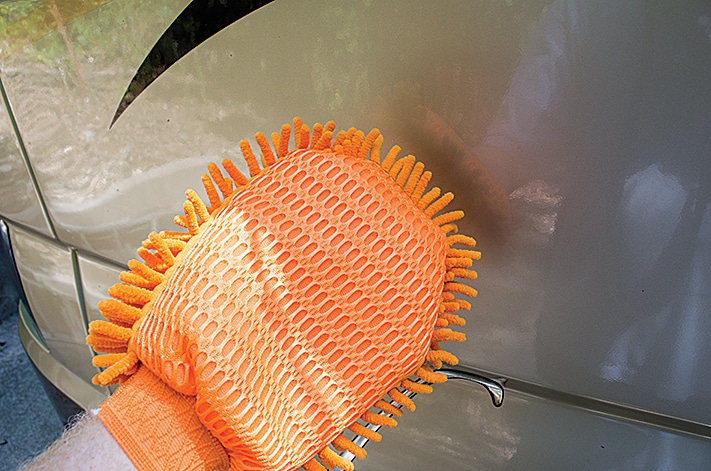
Griot’s has one of the best mitts that we could find. One side is made for normal washing and the side shown here is designed specifically for bug removal. That honeycomb structure aids in mechanical removal of the bugs.
Thicker Spray-On Application, Wipe Off
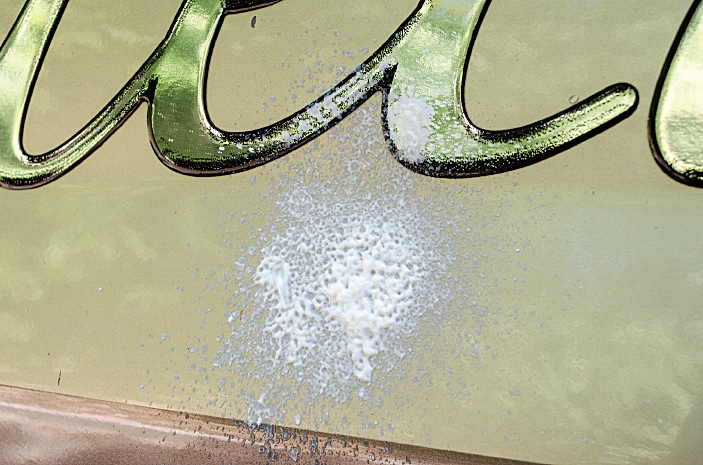
Products like the Meguiar’s and Turtle Wax spray on a thick material that can be used without water. As you can see, the cleaner is very thick and it quickly loads up on a microfiber towel when wiping it off.
The third type of bug cleaner uses a thick, lotionlike viscosity material that is sprayed on the surface and allowed to soak in before polishing off with a clean, dry microfiber towel. Though these products do not require water, they are very different from the thin liquid cleaners mentioned above. The only two cleaners of this type in our test were the Turtle Wax and Meguiar’s products. Although they were both able to remove most bugs, the cleaner is so thick that it easily loads up in the cleaning towels when you try to clean a large area. You are then forced to use several microfiber towels due to the buildup of the thick cleaner on the towels. Neither of these scored very high in our tests due to this reason.
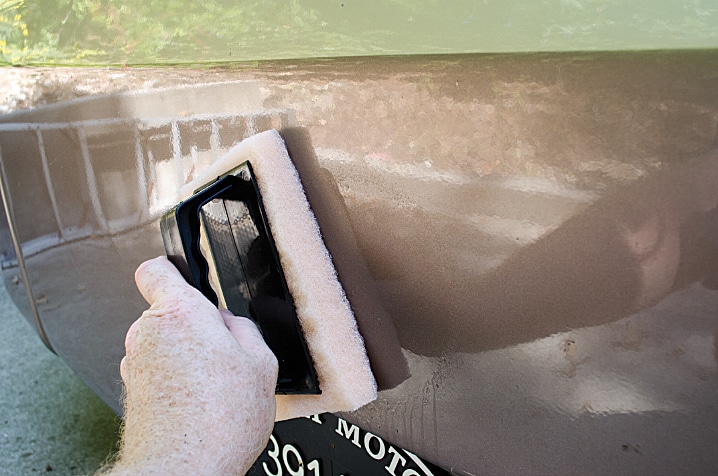
Aero Cosmetics has its own Aero Scrubber that really speeds up the process when used with its Wash Wax ALL product, which requires no water. This is an ideal cleaner and bug remover for most owners because of its ease of use.
Cleaning Tips
One tip that applies to all methods of bug removal is that you should always try to perform the work when the surface temperature of the coach is cool (or at least not hot) and while the coach is in the shade. If you attempt to spray these cleaners on a hot surface, or in direct sunlight, they will dry too quickly and could damage the paint.
The way these products work is they are applied to the surface, then allowed to dwell for the time specified on the label. This dwell time allows the product to penetrate into the dried bugs and dissolve their remains. Once the bug has soaked the cleaner up, the enzymes are diluted and then the bond between the bug and your coach is greatly reduced, which allows you to scrub or wipe it away.
Another important tip is the use of a bug scrubber made just for this task. These scrubbers will help mechanically remove the bug along with the cleaner, which is a chemical process. Several of the companies that make bug cleaners also sell their own bug-scrubber pad or mitt. These scrubbers along with a good microfiber towel are about the only tools we used for most of our tests. Some owners have reported that they prefer wetting the surface with water first, then allowing the bugs to become saturated before they spray on the bug cleaner. However, most products that we tested suggested to spray the product on a dry surface.
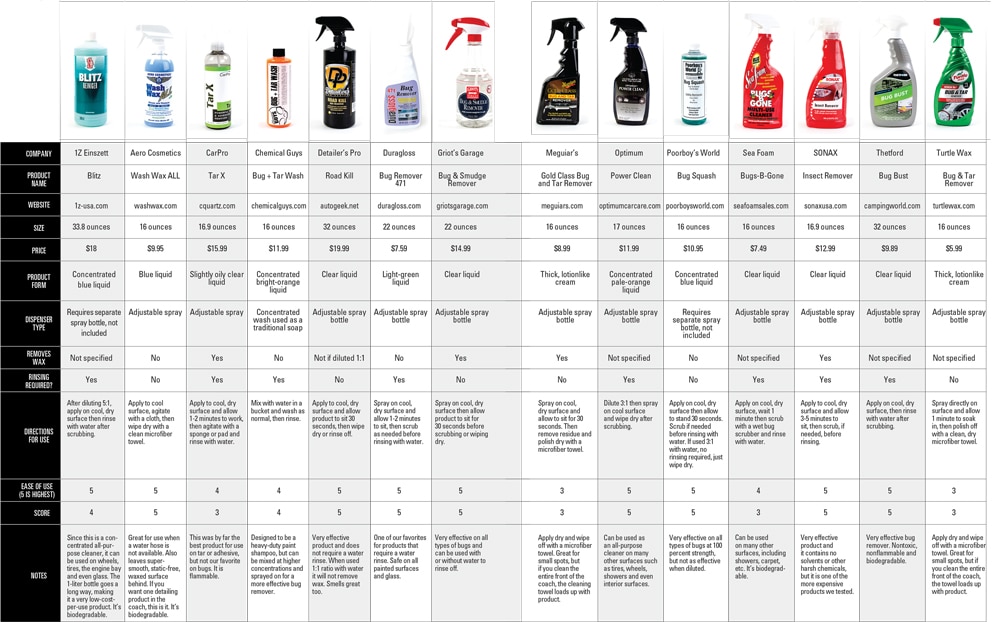
As you review the chart of the various cleaners we tested, make sure you note which ones are concentrates, as they are intended to be diluted with water. This greatly changes the value proposition of these products. Some of them, however, do not include a spray bottle so you may want to factor that into your decision as well.
Some of these cleaners will remove the wax from your paint, so if you don’t want to wax every time you remove bugs, then choose a cleaner that is labeled as wax-safe. Since everyone has a different situation, it is difficult to pick a single best bug remover, but if you look at our chart you should be able to pick one that fits your cleaning routine. If you prefer a wet-wash process, choose one of our top-scoring products (a score of 5 is the highest) that are labeled for use with water. If you prefer a spray-on and wipe-off product, we have several of those that scored very well also.

